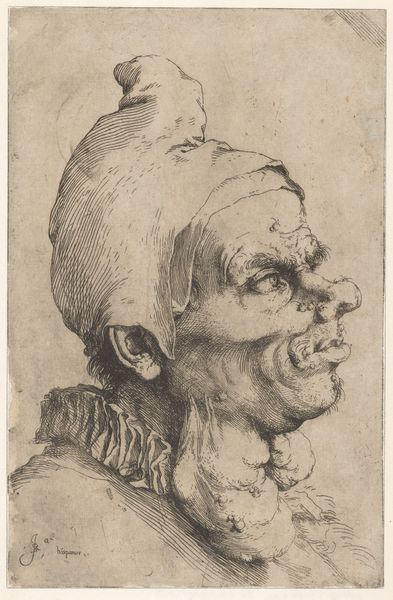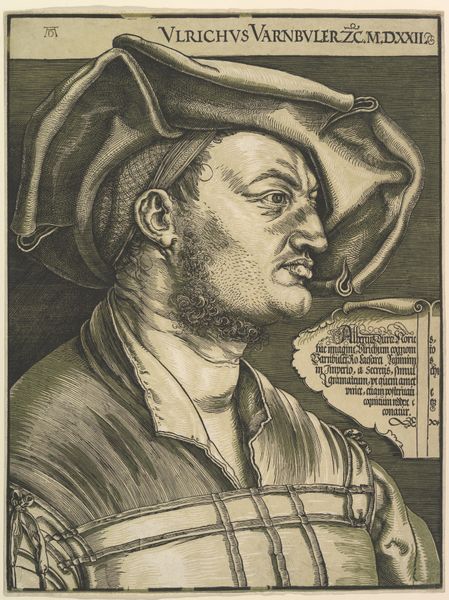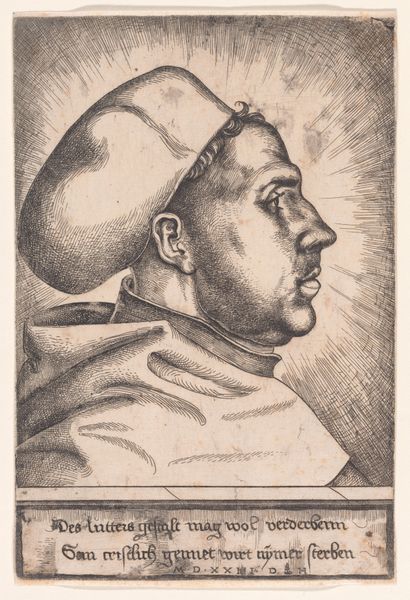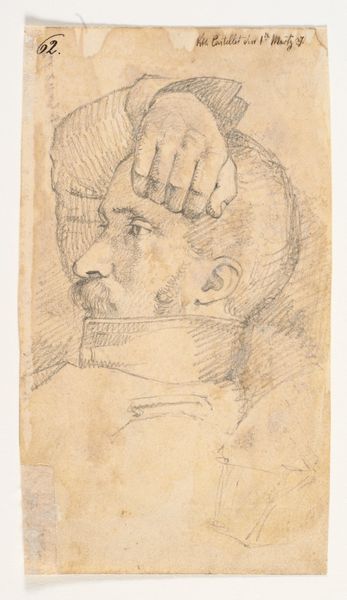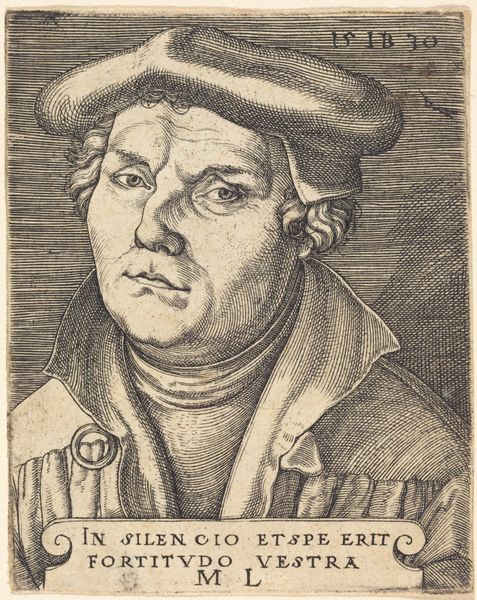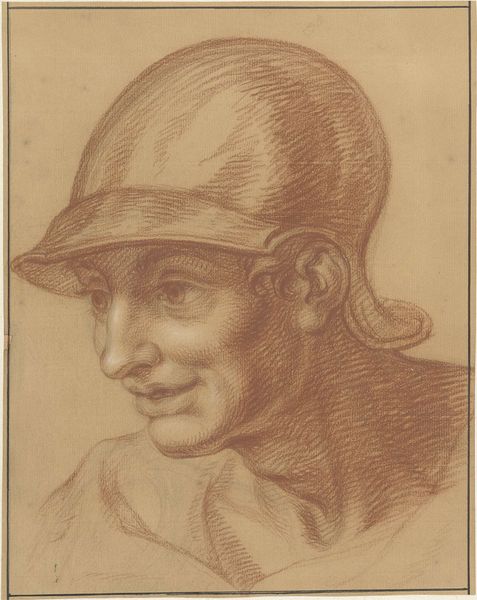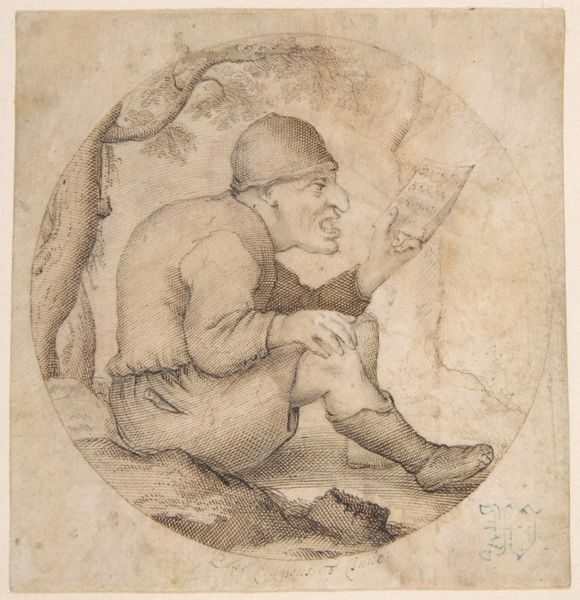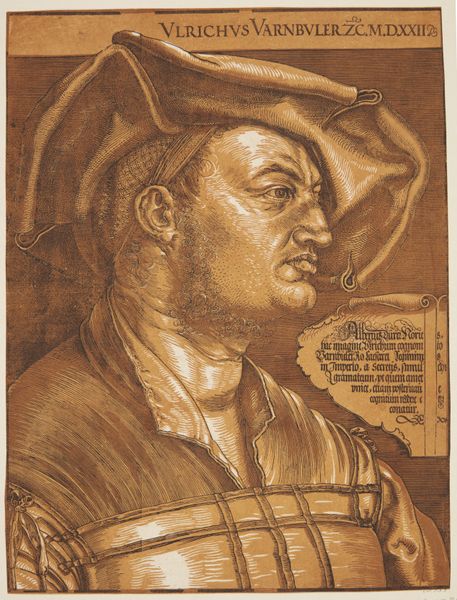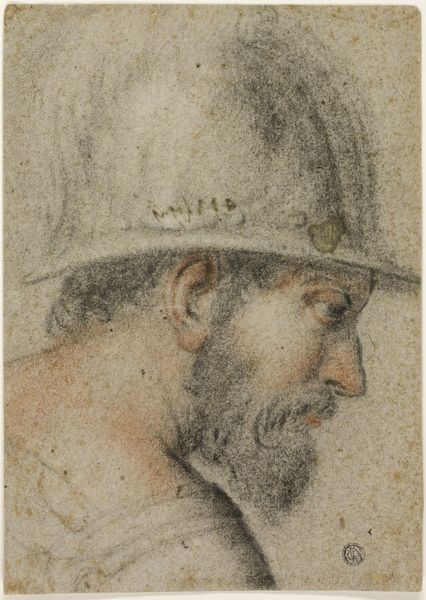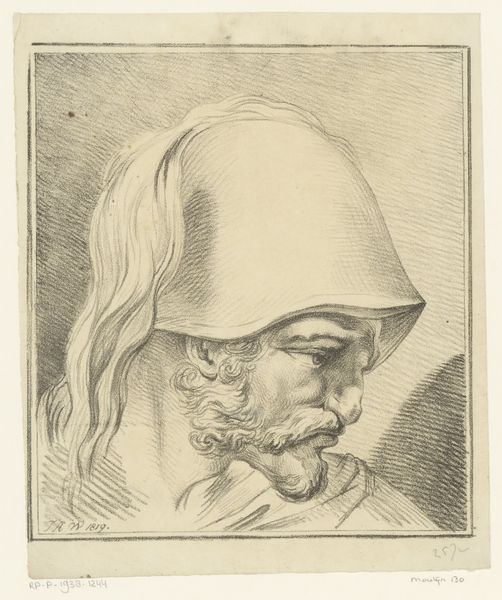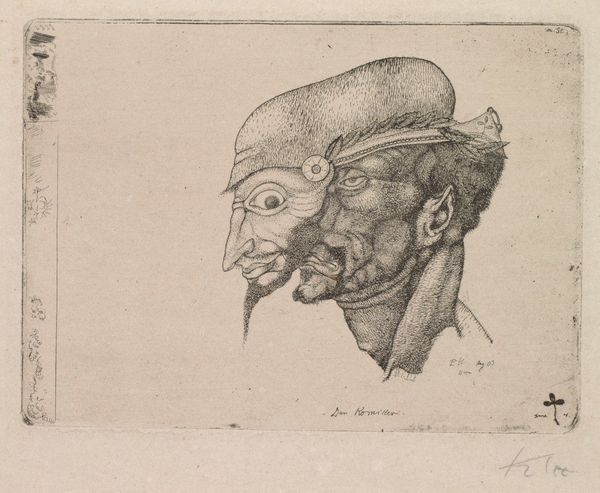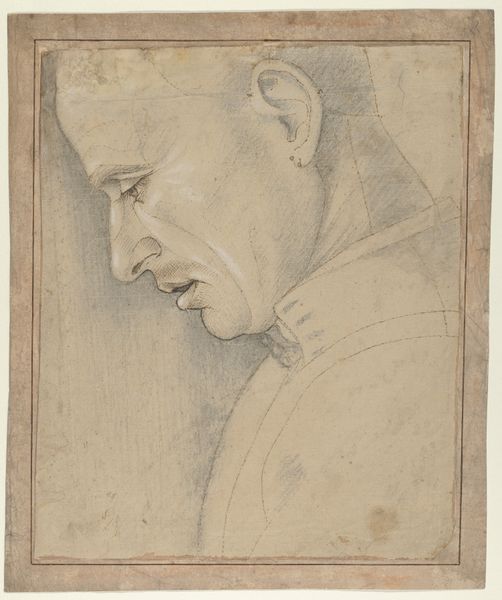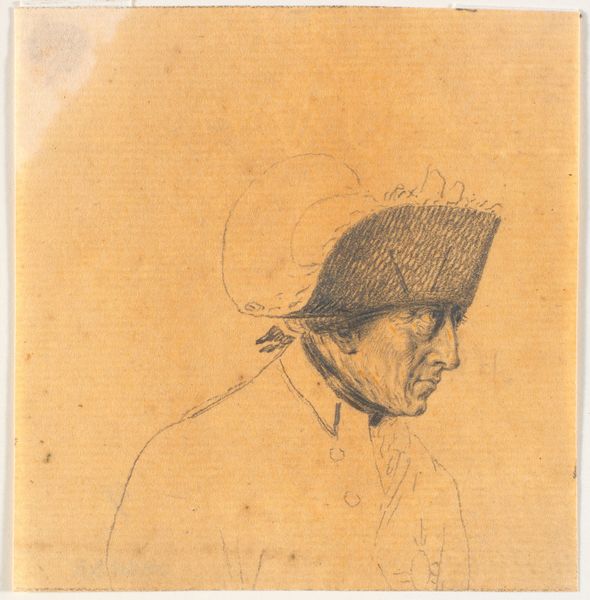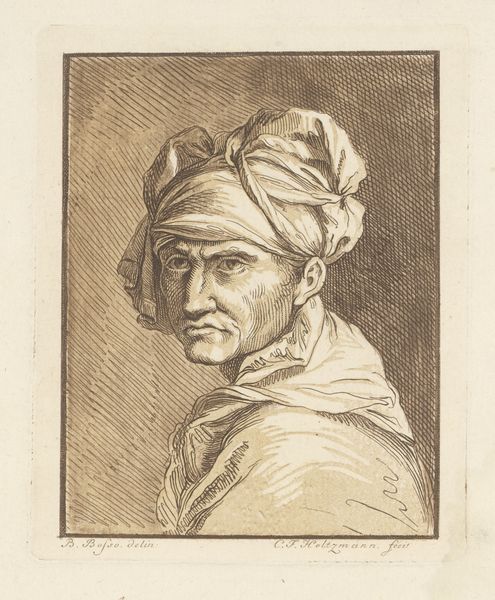
drawing, graphite, engraving
#
portrait
#
drawing
#
head
#
line
#
graphite
#
portrait drawing
#
history-painting
#
northern-renaissance
#
engraving
#
profile
Dimensions: 6 x 4 1/8 in. (15.2 x 10.5 cm)
Copyright: Public Domain
Editor: So here we have Sebald Beham's "Head of a Man" from 1549, created using engraving, and currently housed at The Met. The subject's intense gaze and slightly open mouth make him look rather agitated to me. How do you interpret this work, especially given the period it was created in? Curator: It's interesting that you focus on the agitation. Looking at this engraving, it is impossible for me to ignore the socio-political contexts of the Reformation. Beham was a so-called "godless" painter. Given his association with radical, anti-establishment movements, could this man be a representation of defiance against religious and social norms? Consider the power dynamics at play during that period and how artists might have used portraiture to subtly express dissent. Editor: I hadn't considered the political undercurrents at all. I was mostly reacting to his expression. Are you saying that this expression is actually a kind of... statement? Curator: Possibly. It forces us to think critically about the sitter's position in society, and maybe about Beham's own position too, especially when seen through the lens of social disruption of the Reformation. The work can open dialogue on topics such as individual identity, the face as a mask or reflection, and the politics of the period. This engraving isn’t just a portrait; it's a window into the artist’s own turbulent world and those of his peers. Editor: I see! So, analyzing his "agitation" as resistance to authority offers a much more complex and, frankly, more exciting interpretation than my initial reaction. Thanks for the insights! Curator: My pleasure! It reminds us that artworks are always in dialogue with the context and always speaking to issues beyond aesthetics.
Comments
No comments
Be the first to comment and join the conversation on the ultimate creative platform.
